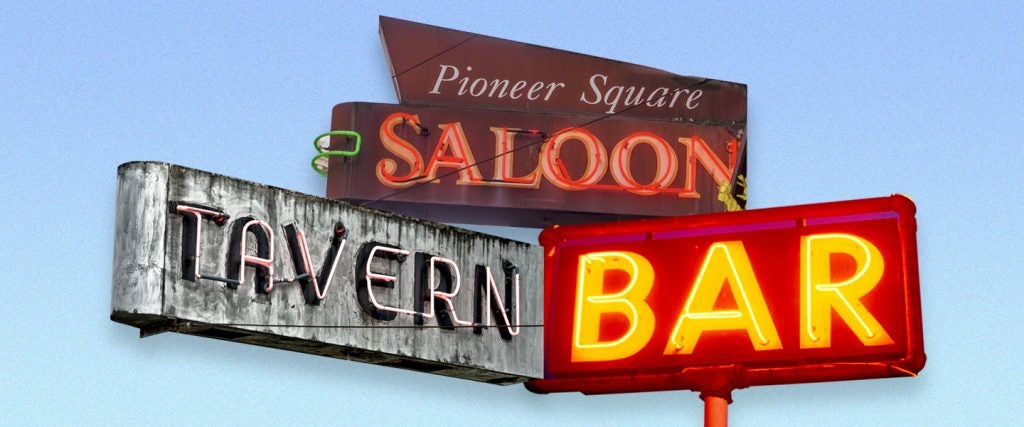When someone asks me what drinking establishments I recommend in Chicago, I typically respond by attempting to ascertain whether they like “dive bars.” In my mind, a dive bar is more or less a catchall term for musty, dimly lit drinking holes with an angry bartender and a jukebox that hasn’t been updated in 30 years.
This conversation, however, would be much more efficient if the words used to describe drinking establishments actually meant something — at least to me. For instance, within a 10-minute walking radius from my apartment, there are roughly 15 different bars, most of which I’d consider some degree of dive bar, yet each is given a different descriptor that somehow makes it harder to tell them apart: the Damen Tavern, Innertown Pub, J&M Tap, Sportsman’s Club, EZ Inn, Easy Bar and Queen Mary, which is simultaneously described as “an old-school saloon” and a “cozy, maritime-themed craft cocktail bar.”
So what is it — a bar or a saloon? A tavern or a pub? An inn or a club? Do these words actually mean anything in terms of describing the basic look and feel of drinking establishments, or is it just a free-for-all?
To be sure, there was a time when these words effectively communicated the kind of joint — there I go now — you were about to enter. Named for the countertop upon which drinks were served, a “bar” referred to an establishment that only served drinks. You could get snacks, maybe, but a bar was the no-kitchen, no-frills basis upon which a secondary descriptor could be used to attract certain clientele — e.g., sports bar, tiki bar, biker bar, arcade bar, etc.
“Today, bars can range from local dives or sports bars to high-end cocktail places,” Katie Cheney, a longtime bartender and editor of the website Drinks Saloon, tells me. “But I tend to think of them as dark with loud music, and often catering to a younger crowd — typically the after-work crowd in most cities.”
Meanwhile, the main differentiator of a tavern or pub, per Cheney, is that they offer a food menu in addition to their drinks menu. Historically, you’d go to a tavern to “do business” while imbibing myriad cocktails and picking at various meats and cheeses. You were also probably in Colonial America, where “tavern” became the term of choice for “public (drinking) houses,” or “pubs.”
But drinking at a pub didn’t just mean you were likely in the U.K. At a pub, you’d find a menu with more substantial meals, a clientele that preferred beer and more focus on leisure than business — a meaning that extends to brewpubs and beer halls, too. Being at a pub also meant the establishment wouldn’t be able to (legally) provide you housing. Only taverns were licensed to rent out rooms to guests, and if they did, that tavern was considered an “inn.”
“Today, pubs and taverns are almost interchangeable,” Cheney says. “Both will likely offer an old-fashioned experience with dark wood, lots of beer and loud chatter, and the main difference might be that a pub will often have a selection of hearty food on the menu, whereas a tavern might just have drinks and maybe some bar snacks.”
As for saloons, they became the term of choice in the American West, and were often associated with having a large reception hall (or just generally being a large establishment), as well as “rowdier crowds.” Contemporary saloons are “western in name and theme only,” Cheney explains. “I don’t think they cater to ‘rowdy’ crowds any more or less than normal bars do today.”
Of course, over time, all these words took on new social and legal meanings, melding and combining them to the point of irrelevance. Case in point: On the East Coast, licensing laws turned taverns into establishments that could only serve liquor. Thus, they became synonymous with seediness. And yet, in the Midwest, taverns are commonly associated with spacious, family friendly pizza places.
At the end of the day, maybe all of this is for the best. Who am I to steer my visiting in-laws toward The Harding Tavern instead of Delilah’s, the iconic Chicago whiskey bar where I almost got stabbed (a la an Old West saloon). Besides, as William Shakespeare (clearly a pub guy) once wrote, what’s in a name? A bar by any other name contains booze that tastes just as sweet.

